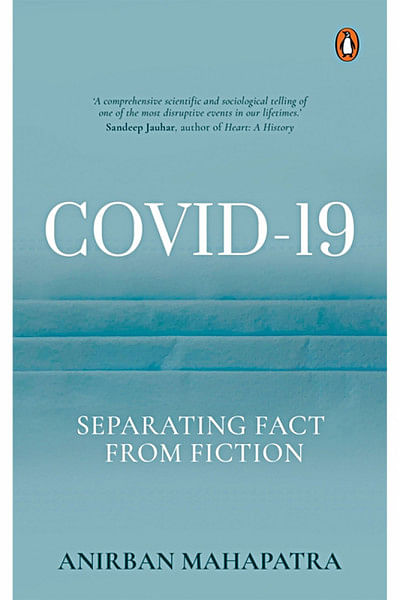Demystifying the COVID-19 pandemic

One year ago, I was tracking cases of a novel coronavirus as it was spreading all across the world. One year into the pandemic, COVID-19 needs no introduction. All of us have been bombarded by information and misinformation on the origin of the virus, symptoms of the disease, how to protect ourselves, how effective drugs and vaccines are, and how the pandemic will end. I started to write my book, COVID-19: Separating Fact from Fiction (Penguin Random House India, 2021), to put COVID-19 in the broader context of what we know about viruses and pandemics. There was a lot of misinformation on the severity of the virus and how it spread, which I wanted to dispel.
As a microbiologist, I remembered SARS and H1N1. But I soon realised that this was a pandemic unlike any we had faced in our lifetimes. The COVID-19 pandemic is not simply a biological epidemic; there are social, geopolitical, and economic components as well. As I wrote and filled in gaps, I understood that there is a human element that requires us to tie in all of these components together. There are articles written every day about the pandemic. Indeed, I've written some myself. What the length of a book allows is the ability to add historical context and scientific detail, and bring various threads together.
The book was written for non-scientists, but there is an extensive list of references that include scientific articles and news stories in the back that might help anyone who wishes to dive deeper. I have outlined the leading theories on where SARS-CoV-2 came from and how it infects our cells. I discuss how the virus spreads and why some people show no symptoms. I offer practical steps we can take to reduce our own risk as we go about our lives.
The COVID-19 is not affecting everyone equally. Taking a broader view, I cover the impact of the first year of the pandemic on the economy, health, technology, and society. Just as more people are getting vaccinated, new variants of the virus that are more infectious and might potentially evade immune responses are becoming a factor in ending the crisis.
More than 150 countries instituted some form of a lockdown last year including Bangladesh. Since then the trajectory has not been the same in every country. In 2020, Bangladesh and other countries of South Asia had seen lower mortality rates from COVID-19 than many other countries (though some of it may be attributed to underreporting). We do not definitively know why cases remained low through 2020. But we do know that variants (particularly the ones that were first identified in the United Kingdom and in Brazil) are spreading faster than the strain that was predominant through last year. The UK variant has been identified in a patient in Dhaka earlier this year. This is concerning, particularly as Dhaka eases into its second lockdown exactly a year from the "general holiday" imposed last year.
In many parts of the world, infectious diseases such as cholera and malaria are a perennial threat. Asian countries are used to taking these threats seriously. But there is also no room for complacency. Right now, we are in the middle of a race between a virus that is mutating into new variants with increased transmissibility, and the ability of the world to produce vaccines and vaccinate people rapidly to end the pandemic. But as I write in my book, "COVID-19 is not the pandemic that will end civilization. It is not even the last pandemic that many of us will face". We must be better prepared for the next one.
Anirban Mahapatra, a microbiologist by training, is the author of COVID-19: Separating Fact From Fiction (Penguin Random House India, 2021). These are his personal views.

 For all latest news, follow The Daily Star's Google News channel.
For all latest news, follow The Daily Star's Google News channel. 



Comments